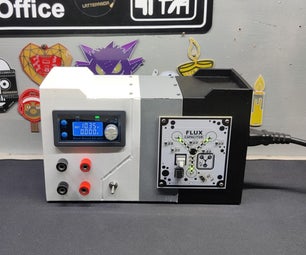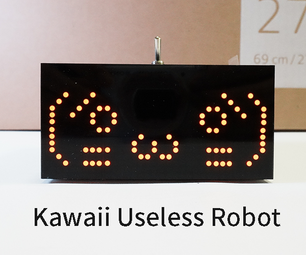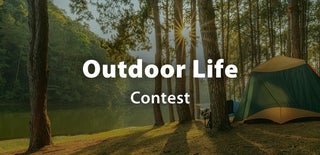Introduction: DIY Light Scoop Template
Light scoops work wonders for indoor flash photography by shifting your camera's built in flash from direct to indirect lighting. The reflector mirror blocks the direct flash and illuminates the ceiling and walls to give a more ambient light fill. It's not dramatic, but it may be that little extra light you need for an amazing indoor shot. It works best for portraits with close up framing. With just a few tools and materials you can make one in about an hour or less. I have created a template for people to print on their home printer as well as a template for people who may have access to a plotter.
Does the color of the poster board matter? Yes it does. Why? Because I want it to match my camera and not to look like a DIY from 10 feet. Other than that the color of the Light Scoop is irrelevant as far as I know.
A quick materials list:
Inkjet or Laser Printer
Poster Board - at least 8.5" x 11" (Black if you can get it)
Hobby Knife (& cutting surface) or Scissors
Scotch Tape
Double Sided Tape, or Hot Glue, or Wood Glue (In order of easiest and quickest to apply)
Reflective Material (Aluminum foil, White paper works well too, or mirror vinyl like I used,)
Velcro (Optional)
Sharpie (Optional)
Does the color of the poster board matter? Yes it does. Why? Because I want it to match my camera and not to look like a DIY from 10 feet. Other than that the color of the Light Scoop is irrelevant as far as I know.
A quick materials list:
Inkjet or Laser Printer
Poster Board - at least 8.5" x 11" (Black if you can get it)
Hobby Knife (& cutting surface) or Scissors
Scotch Tape
Double Sided Tape, or Hot Glue, or Wood Glue (In order of easiest and quickest to apply)
Reflective Material (Aluminum foil, White paper works well too, or mirror vinyl like I used,)
Velcro (Optional)
Sharpie (Optional)
Step 1: Print Template
Make sure you print "Actual Size" and not "Fit" or "Scale to paper" withing your print properties. It should fit perfectly without any cropping when scaled to 100%.
I used a plotter which meant I skipped this step.
I used a plotter which meant I skipped this step.
Step 2: Tape Template to Poster Board
Simply tape the template to your poster board. If you roughly cut out the template first and then tape it several areas you will reduce shifting as you cut.
Again, I used a plotter so yours will look different but you get the picture.
Again, I used a plotter so yours will look different but you get the picture.
Step 3: Score the Folds
Align your ruler to the fold lines being sure to leave a slight offset so that your scoring tool is centered to the fold line. You can use a penny, washer, or the dull side of a butter knife as your scoring tool. Run it over the score line a couple of times until you see a nice dent in the poster board.
Step 4: Pre-Fold
Fold along all the score you made and make sure you understand how it will come together. There is a small flap that needs to be folded in to receive the front reflector face. Make sure it is folded a little more than 90 degrees so that you can align it more easily to the front face when using double sided tape.
Step 5: Apply Double Sided Tape
Apply a strip of double sided tape to outer surface of the short flap being sure not to go past the score fold. Then trim away any excess tape with a hobby knife or scissors.
If you are using glue then follow the directions for the glue and continue on. Be sure not to let the glue go past the score fold.
If you are using glue then follow the directions for the glue and continue on. Be sure not to let the glue go past the score fold.
Step 6: Attach the Flap
Now you can attach the flap to the front face being careful to align the edge of the face with the fold line. Apply pressure and the body is done.
If you had to use hot or wood glue then take steps to insure the piece is secure while drying. You could use a paperclip to, or clothes pins to hold it.
As a final touch-up I used a black Sharpie to color the edges of the poster board.
If you had to use hot or wood glue then take steps to insure the piece is secure while drying. You could use a paperclip to, or clothes pins to hold it.
As a final touch-up I used a black Sharpie to color the edges of the poster board.
Step 7: Reflector
Before you cut out the reflector piece apply double sided tape, or contact cement to a piece of poster board roughly larger than the reflector template.
Lay your reflective material flat facing down. (If using contact cement then apply a thin coat to the back side of the reflective material and allow to air dry for a minute)
Then hover your rough cut poster board over the reflective material and let one long edge touch flat first and then lay the rest of the board down. You can use a credit card as a squeegee to make it smooth.
Once it's ready tape your template over the reflector and cut it out.
With mine I made my reflector gold on one side and chrome on the other. I also used some safety tape (Like on police and ambulance vehicles) for a second reflector.
Lay your reflective material flat facing down. (If using contact cement then apply a thin coat to the back side of the reflective material and allow to air dry for a minute)
Then hover your rough cut poster board over the reflective material and let one long edge touch flat first and then lay the rest of the board down. You can use a credit card as a squeegee to make it smooth.
Once it's ready tape your template over the reflector and cut it out.
With mine I made my reflector gold on one side and chrome on the other. I also used some safety tape (Like on police and ambulance vehicles) for a second reflector.
Step 8: Start Shooting
The Light Scoop installs by slipping the tab into the flash holder. If you opted to use the velcro tab then you should have a pretty secure scoop. For me my camera is still new and I'm hesitant to apply anything to it. If I was a professional I would have professional equipment, and any of this DIY would be null.
I snapped off some pictures using my Canon T3i with the following settings. The only setting I purposely adjusted was my aperture value to blur out the background. These series of shots allow you to see the impact of the Light Scoop.
Shooting Mode
Aperture-Priority AE
Tv( Shutter Speed )
1/60
Av( Aperture Value )
1.8
Metering Mode
Evaluative
Exposure Compensation
0
ISO Speed
100
Lens
50.0 mm
Focal Length
50.0 mm
Digital Zoom
None
Image Size
5184x3456
Image Quality
Fine
Flash
On
Flash Type
Built-In Flash
Flash Exposure Compensation
0
Shutter curtain sync
1st-curtain sync
White Balance
Color Temperature(3600K)
Parameters
Contrast Normal
Color saturation Normal
Tone Curve Standard
Sharpness level 0
Color tone Normal
Color Space
sRGB
Color Matrix
132
Drive Mode
Single-frame shooting
I snapped off some pictures using my Canon T3i with the following settings. The only setting I purposely adjusted was my aperture value to blur out the background. These series of shots allow you to see the impact of the Light Scoop.
Shooting Mode
Aperture-Priority AE
Tv( Shutter Speed )
1/60
Av( Aperture Value )
1.8
Metering Mode
Evaluative
Exposure Compensation
0
ISO Speed
100
Lens
50.0 mm
Focal Length
50.0 mm
Digital Zoom
None
Image Size
5184x3456
Image Quality
Fine
Flash
On
Flash Type
Built-In Flash
Flash Exposure Compensation
0
Shutter curtain sync
1st-curtain sync
White Balance
Color Temperature(3600K)
Parameters
Contrast Normal
Color saturation Normal
Tone Curve Standard
Sharpness level 0
Color tone Normal
Color Space
sRGB
Color Matrix
132
Drive Mode
Single-frame shooting
Step 9: Wrapping It Up
This all started while planning and researching tips for a photo shoot of my family for this weekend . I'm planning an outdoor shoot so don't ask me how I managed to work out this indoor DIY. A.D.D at its best I guess. Anyway, having always hated the results of the built in flash and already way over budget for my short film equipment needs (the DSLR is also a camera! Wait, no I mean it's also a Camcorder!) I couldn't spend a cent more, yet I still needed a better option for flash photography. This LightScoop gets me half way there and I couldn't be happier with the results.
I saw other peoples templates online but I didn't like the way they were so fragile in the back and I thought what the heck, I'm a designer so let me design something.
I'm pretty happy with the results considering I only made one change to my original prototype, and although it could be perfected more that wasn't the point of this build and I might as well buy one at that point.
I am sharing this with you because it would be a shame to not to, and I hope someone will use this process, improve it, and share it again.
Thanks for stopping by.
I saw other peoples templates online but I didn't like the way they were so fragile in the back and I thought what the heck, I'm a designer so let me design something.
I'm pretty happy with the results considering I only made one change to my original prototype, and although it could be perfected more that wasn't the point of this build and I might as well buy one at that point.
I am sharing this with you because it would be a shame to not to, and I hope someone will use this process, improve it, and share it again.
Thanks for stopping by.










